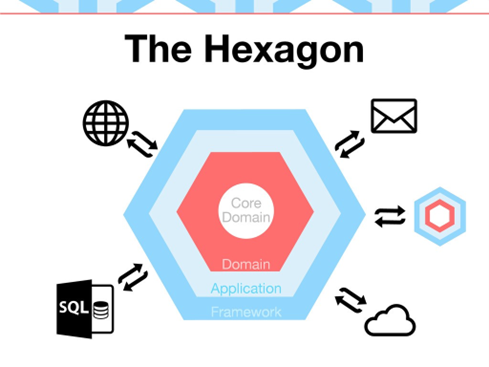Introduction:
Understanding dependency injection and dependency inversion is crucial for software engineering. Although having a similar tone, they are separate concepts with unique purposes.
In this post, we'll look at the differences between dependency injection and dependency inversion as well as how to apply each to improve the way your software systems are designed.
What is Dependency Injection ?
Dependency injection is a design pattern that enables you to inject dependencies into classes from the outside rather than handling them internally. It helps to improve the code's testability, maintainability, and reuse by separating the concerns from one another.
With Dependency Injection, you can provide dependent objects to a class, rather than the class creating or managing them internally. Constructor injection, setter injection, and interface injection are a few techniques that can be used to do this. The goal is to make the code more flexible and extensible by enabling the dependencies to be replaced or updated without changing the class's code.
What is Dependency Inversion?
Dependency Inversion, On the other side, is a design principle suggests that high-level modules or classes need to rely on abstractions (such as interfaces or abstract classes) rather than low-level modules or classes directly. This principle lessens connectivity between modules or classes and enables greater modularity, flexibility, and extension.
By allowing dependencies to be stated externally and abstracted through interfaces or abstract classes, we can achieve dependency inversion. As a result, the code is easier to change without modifying the class's code and is more versatile and extendable.
the difference between Dependency Injection and Dependency Inversion
Dependency Injection and Dependency Inversion are related concepts, but they refer to different things. Dependency Injection is a technique for implementing Dependency Inversion, while Dependency Inversion is a more general principle that guides the design of a system or application.
Dependency Injection allows you to inject dependencies from outside the class, whereas Dependency Inversion specifies that high-level modules should depend on abstractions rather than low-level modules. Dependency Injection is focused on the implementation details of injecting dependencies, while Dependency Inversion is focused on the high-level design of the system.
Conclusion
Dependency Injection and Dependency Inversion are essential concepts in software engineering that can help you to build more flexible, maintainable, and extensible systems. By understanding the differences between them, you can use them effectively to improve the design of your software systems.
In conclusion, Dependency Inversion is a design philosophy that contends high-level modules should depend on abstractions rather than low-level modules, and Dependency Injection is a design pattern that allows you to inject dependencies of a class from outside. To design reliable software systems, keep in mind that Dependency Injection is a technique for accomplishing Dependency Inversion.
Understanding dependency injection and dependency inversion is crucial for software engineering. Although having a similar tone, they are separate concepts with unique purposes.
In this post, we'll look at the differences between dependency injection and dependency inversion as well as how to apply each to improve the way your software systems are designed.
What is Dependency Injection ?
Dependency injection is a design pattern that enables you to inject dependencies into classes from the outside rather than handling them internally. It helps to improve the code's testability, maintainability, and reuse by separating the concerns from one another.
With Dependency Injection, you can provide dependent objects to a class, rather than the class creating or managing them internally. Constructor injection, setter injection, and interface injection are a few techniques that can be used to do this. The goal is to make the code more flexible and extensible by enabling the dependencies to be replaced or updated without changing the class's code.
What is Dependency Inversion?
Dependency Inversion, On the other side, is a design principle suggests that high-level modules or classes need to rely on abstractions (such as interfaces or abstract classes) rather than low-level modules or classes directly. This principle lessens connectivity between modules or classes and enables greater modularity, flexibility, and extension.
By allowing dependencies to be stated externally and abstracted through interfaces or abstract classes, we can achieve dependency inversion. As a result, the code is easier to change without modifying the class's code and is more versatile and extendable.
the difference between Dependency Injection and Dependency Inversion
Dependency Injection and Dependency Inversion are related concepts, but they refer to different things. Dependency Injection is a technique for implementing Dependency Inversion, while Dependency Inversion is a more general principle that guides the design of a system or application.
Dependency Injection allows you to inject dependencies from outside the class, whereas Dependency Inversion specifies that high-level modules should depend on abstractions rather than low-level modules. Dependency Injection is focused on the implementation details of injecting dependencies, while Dependency Inversion is focused on the high-level design of the system.
Conclusion
Dependency Injection and Dependency Inversion are essential concepts in software engineering that can help you to build more flexible, maintainable, and extensible systems. By understanding the differences between them, you can use them effectively to improve the design of your software systems.
In conclusion, Dependency Inversion is a design philosophy that contends high-level modules should depend on abstractions rather than low-level modules, and Dependency Injection is a design pattern that allows you to inject dependencies of a class from outside. To design reliable software systems, keep in mind that Dependency Injection is a technique for accomplishing Dependency Inversion.


